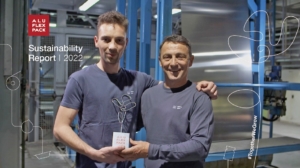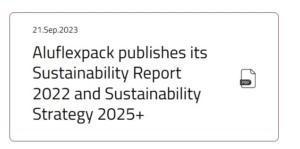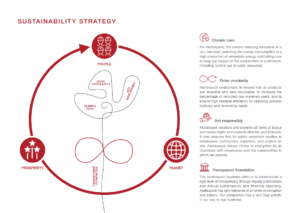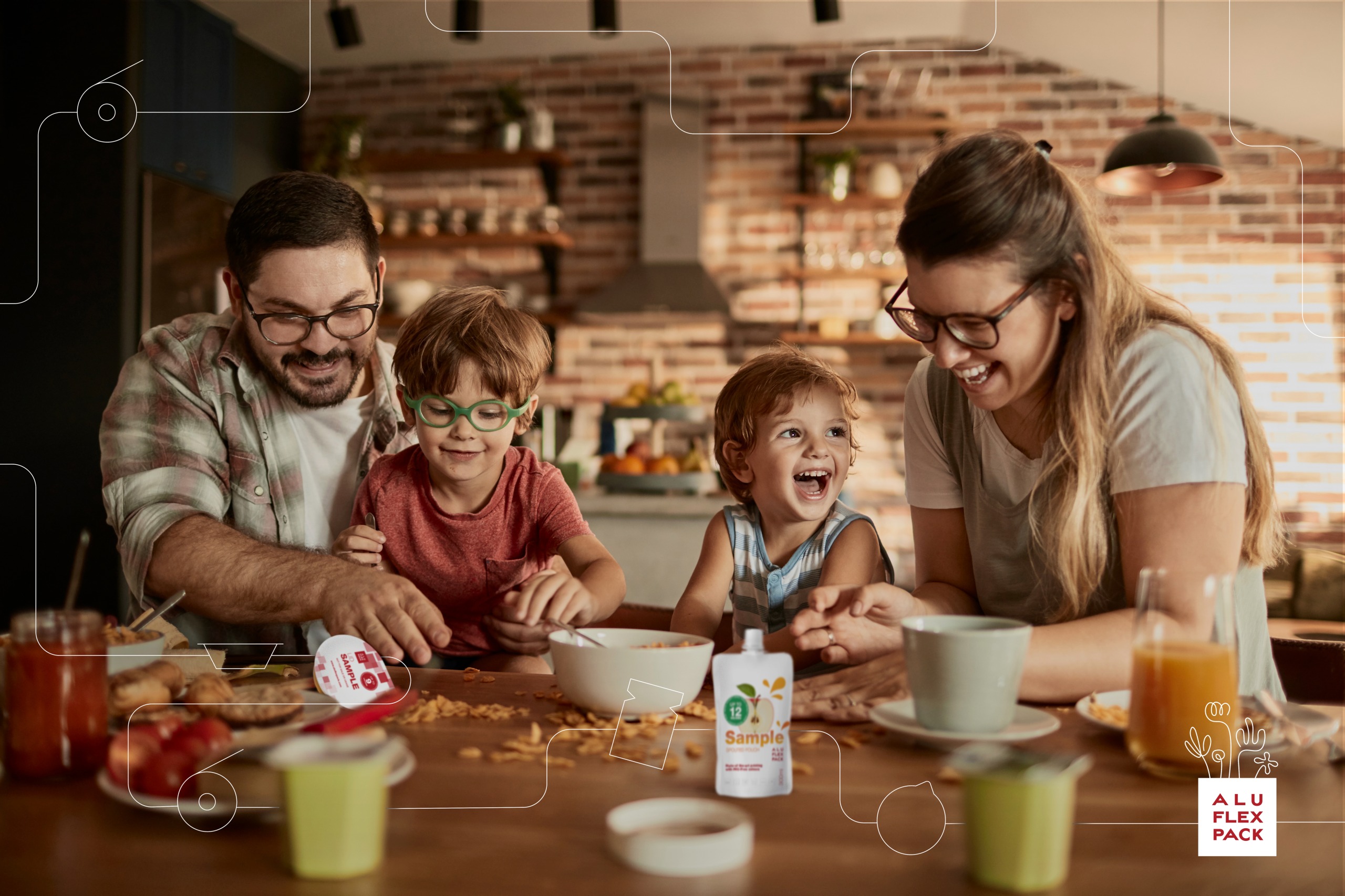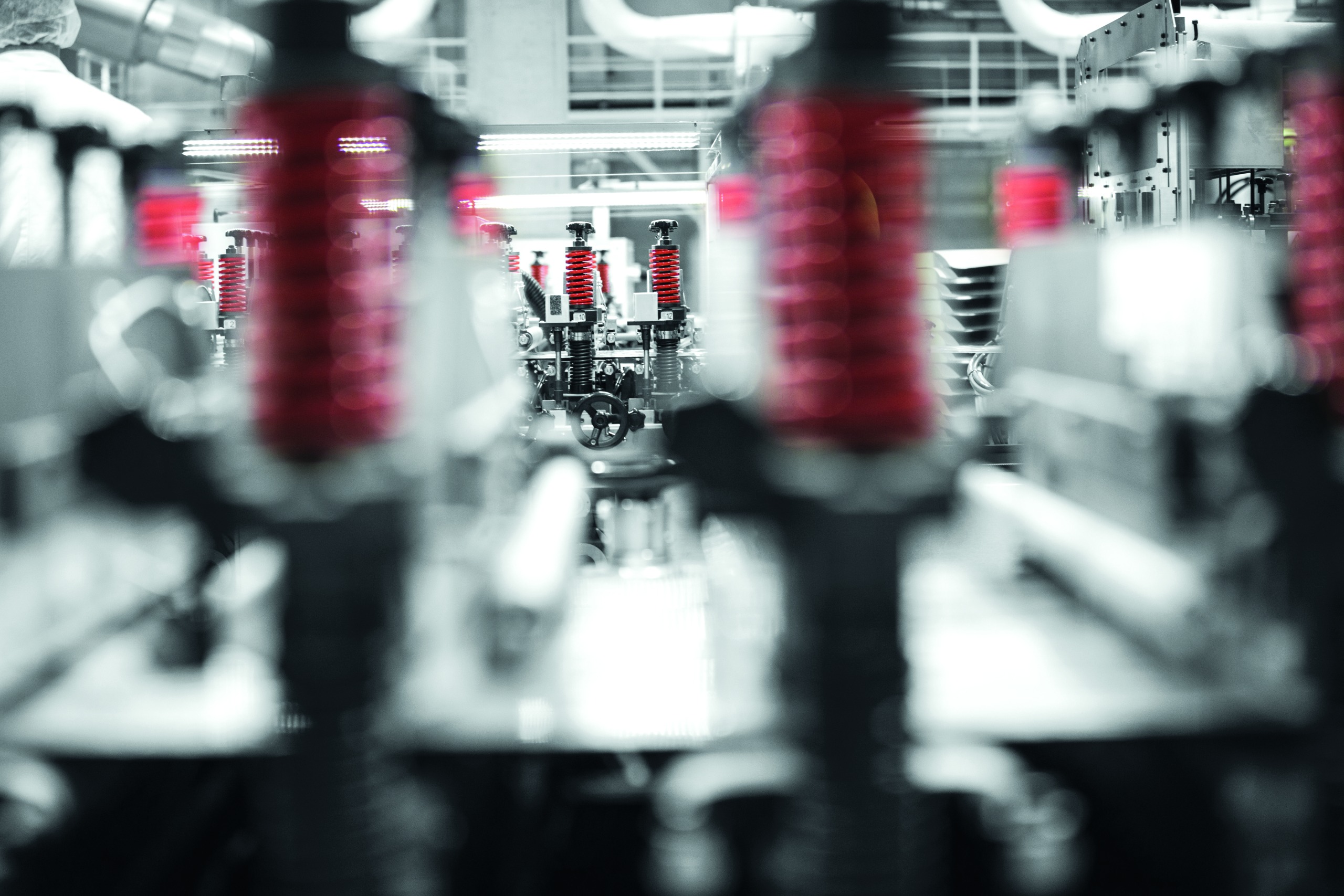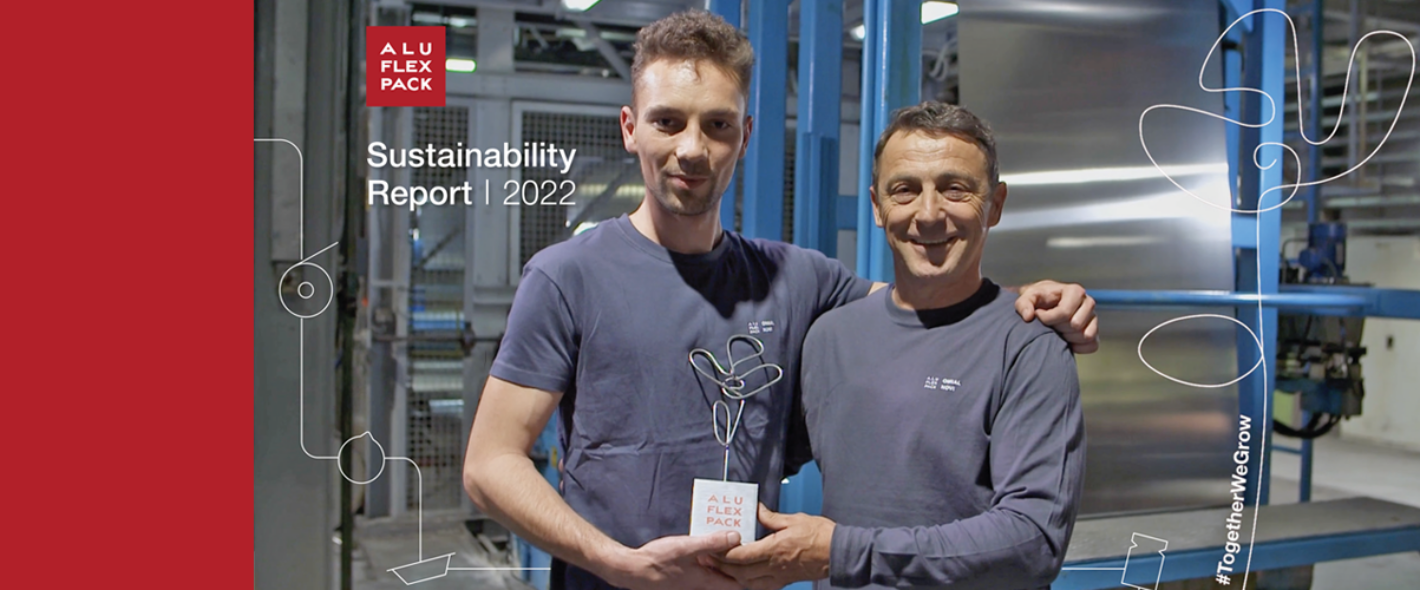
21.09.2023.
Our Sustainability Report 2022 and Sustainability Strategy 2025+ have been published!
We are happy to announce the publication of our Sustainability Report 2022, detailing our ESG performance for 2022, together with our Sustainability Strategy to 2025 and beyond!
To read the report, click below:
To read the media release, click below:
Aluflexpack’s CEO, Johannes Steurer says: “Our sustainability roadmap is an integral part of our 3-WIN 2025 strategy. It enables us to provide sustainable packaging solutions and meet our customers’ sustainability goals and guides us on our path to become the most integrated solution provider. We will continue to invest in decarbonisation of our operations, in our people and achievement of our ESG goals.”
KEY FIGURES
- Scope 1 & 2 emission intensity reduced by 6.9% y-o-y[1]
- Waste diversion rate increased to 75.4% due to higher recycling ratio of both hazardous and non-hazardous waste (FY 2021: 75.1%)[2]
- Development of several new and improved circular flexible packaging including mono-material and recycled content solutions
- Formalised sustainability strategy to 2025 and beyond
Aluflexpack AG (hereinafter referred to as “Aluflexpack” or the “Group”), a leading European manufacturer of premium circular flexible packaging and barrier solutions, announces today the publication of its Sustainability Report 2022, detailing the company’s ESG performance for the fiscal year 2022 as well as its Sustainability Strategy to 2025 and beyond. In 2022, scope 1 & 2 emission intensity was reduced by 6.9% to 301 kt CO2 / Aluflexpack unit (FY 2021: 323 kt CO2 / Aluflexpack unit). The Group increased its waste diversion rate to 75.4% (FY 2021: 75.1%) as a result of higher recycling ratio of both hazardous and non-hazardous waste. In line with its commitment to the development of fully circular packaging solutions, the Group has made progress in manufacturing of several new and improved mono-material and recycled content solutions, among others.
[1] Emission intensity is calculated as total scope 1 and scope 2 emissions divided by a specifically defined production unit, which considers differences in product technology, product shape and other features of product types – the so-called “Aluflexpack unit”.
[2] Waste diversion rate is calculated as total amount of hazardous plus non-hazardous waste diverted to recycling or reusage or recovery in tons divided by total amount of non-hazardous and hazardous waste in tons, multiplied with 100. A higher diversion rate indicates a successful waste management effort in diverting waste from traditional disposal methods.

